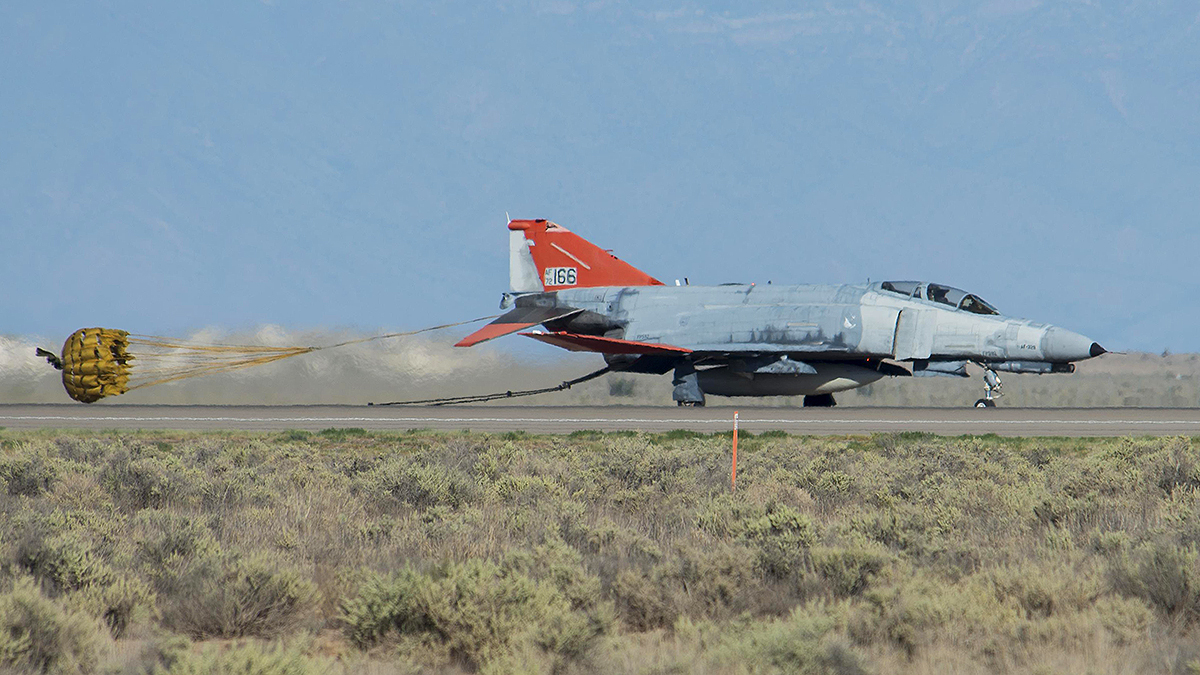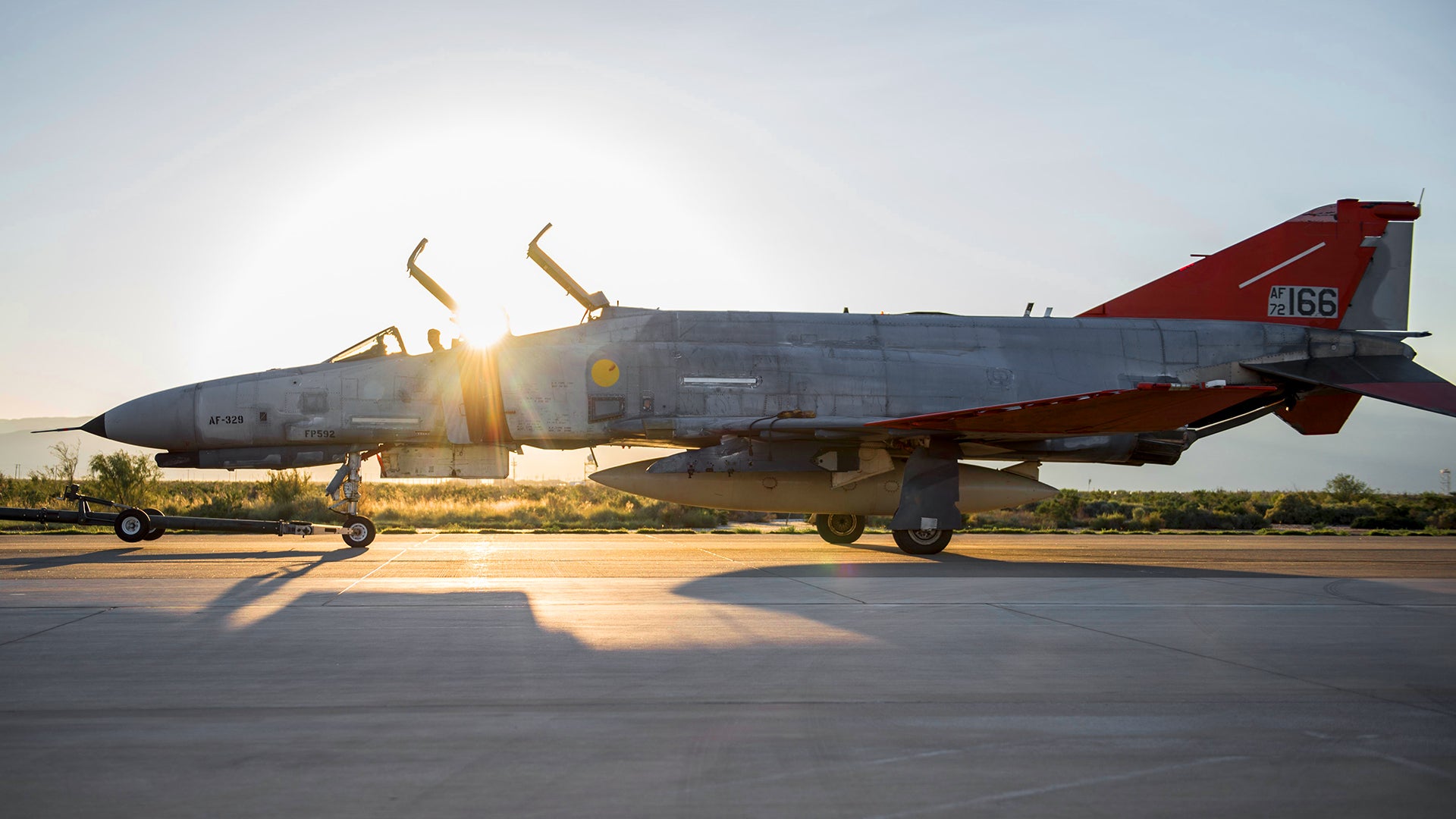20 years after it was fully retired from combat duty by the Pentagon, the F-4 Phantom Full Scale Aerial Target (FSAT) has taken its last unmanned flight. The bitter-sweet milestone was marked on August 17 at Holloman AFB in New Mexico, now the QF-4’s only home. The jet was shot at during a weapons test by a pair of AIM-120 AMRAAM slinging F-35s.
Apparently the QF-4 was not lost in the test, which is not uncommon as often times these drills feature missiles without warheads. Since the AIM-120 is proximity fused and uses a continuous-rod blast fragmentation warhead, as long as the missile gets close enough to the target it is considered a kill. This allows for the possibility of the FSAT to live another day without significantly impairing test data while also providing telemetry on the missile’s own end-game performance.
Now, Detachment One of the 82nd Aerial Targets Squadron (ATRS) will only enjoy a few more months of manned QF-4 operations before the type is finally retired in full this December. Taking over the FSA’s duties will be the more adaptable and far more nimble QF-16 Viper, which has been flown for two years by the 82nd ATRS at Tyndall AFB. The last QF-4 flew from Tyndall last May. This awesome video commemorates the winding-down of operations of the iconic aircraft at the Florida base.

Lieutenant. Colonel Ryan Inman, the former 82nd ATRS commander, stated in a Air Force press release:
“The aging fleet of the QF-4s and their limited capabilities against modern fighters have rendered the aerial target workhorse, Phantom II, at its technological limit. The QF-16 initiates the next chapter in advanced aerial targets, predominantly in support of more technologically superior air-to-air weapons test and evaluation programs. The QF-16 will enable our leaner and more efficient Air Force to continue operations at maximum mission effectiveness while maintaining air superiority and global reach for decades to come.”

Lieutenant Colonel Ronald Kind, the current commander of the 82nd ATRS, added:
“It’s certainly bittersweet. The F-4 served faithfully in Vietnam and as late as the Gulf War. So, for it to be pulled out of the boneyard to continue serving its country is a testament to this airplane — to the designers, the test pilots who first flew it, to the maintainers who’ve worked on it all these years—what a testament to what they’ve been able to do, and what a great airplane it was. Forty-five years later, we are still flying these airplanes to test the latest and greatest equipment we have.”
The F-4 still serves around the globe, in the armed forces of Turkey, Greece, Iran, South Korea and Japan. But the next decade will likely be the type’s final operational hurrah. In its better part of a century of service the F-4 has participated in countless battles, executed many heroic feats by some of the bravest and most talented pilots at her controlls, flown for the Blue Angels and the Thuderbirds, as well as the USAF, USMC and US Navy simultaneously. It has also made some ridiculously awesome solo displays, and has been dreamed up in seemingly an endless number configurations and produced under license around the globe with a whopping 5,195 having been built in total.


